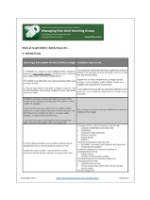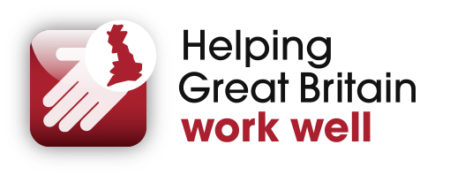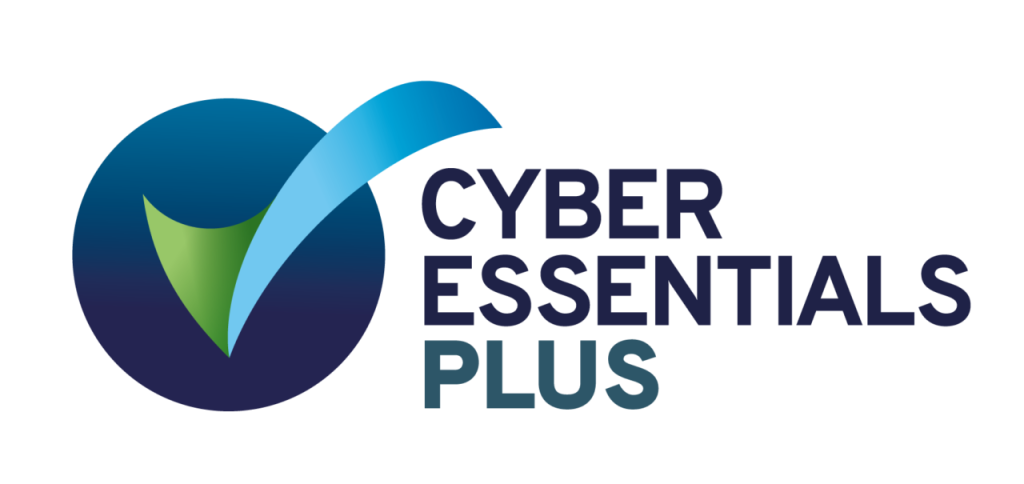SAFETY
STEPS
Work at height guidance
Safety Steps is a series of documents that can be used freely – in whole or part – to help produce any type of height safety output for designers, clients, managers, supervisors or operatives. A key aim of the documents is to remove the need to continually redefine or look for the essential messages for ensuring safe work at height. Safety Steps provides the key messages in one place, making it a valuable, long-term reference point for industry.
Safety Steps were created by the ‘Managing Risk Well’ Group, a leading safety group within construction industry body CONIAC (the Construction Industry Advisory Council), with input from the Access Industry Forum.
The Safety Steps suite of guidance is now hosted on the CONIAC website. To access the Safety Steps guidance, click here.
How you might use Safety Steps
From toolbox talks to checklists, providing a structure for training material content to informing flowcharts, Safety Steps has a wide range of uses.

FLOWCHARTS / INFOGRAPHICS

TRAINING
MATERIALS

POSTER
CAMPAIGNS

TOOLBOX
TALKS

RULES AND
GUIDELINES
Scope of Safety Steps
Safety Steps contain general, rather than task-specific, messages. So, for example, they don’t provide information about specific situations such as the use of scaffolding or mobile work platforms, or working on roofs. Instead, their essential messages underpin any type of work at height activity.

Safety Steps
General Guidance - Start Here!
The general guidance is a useful starting point
General Safety Steps is a concise summary of the general principles of safe working at height, for easy reference.
We recommend you start by downloading this general safety steps guidance and then select audience specific safety steps as required.
Essential messages for Designers
DESIGNER
Eliminate work at height if possible
- Key issues to consider
- Skills and knowledge
- Low-risk maintenance
Key information for clients
CLIENT
Work at height should be planned
- Examples of information
- Points to consider
- Areas to control
Managing work at height
MANAGER
Co-ordinate / communicate with client and others
- Plan work at height
- Manage sub-contractors
- Inspect Equipment
Supervising work at height
SUPERVISOR
Make sure all working at height is safe
- Assess and record risks
- Monitor work at height
- Inspect equipment
Working at height
OPERATIVE
Make sure you work safely at height
- Aware of responsibilities
- Safe work at height
- Training and Inspection

Construction Industry Advisory Committee
About CONIAC
The Construction Industry Advisory Committee (CONIAC) advises HSE and relevant stakeholders of emerging health and safety developments and risks in the construction industry, and sets a direction and plan for their promotion and mitigation.
Aligned to delivering Help Great Britain Work Well, CONIAC is organised under the six themes of acting together, tackling ill health, managing risk well, supporting small employers, keeping pace with change and sharing our success.

Construction Industry Advisory Committee
Managing Risk Well Working Group
CONIAC’s Managing Risk Well Working Group (MRWWG) created a sub-group to focus on working at height.
Drawn from industry bodies, trade associations and representatives of working at height trades, the sub-group was tasked with considering a framework for safe working at height.
The Safety Steps range of documentation is the output from the sub-group.
Construction Industry Advisory Committee
Stakeholders' Comment On Safety Steps
“’Safety Steps’ provides the essential safety messages for the five key groups involved in work at height in construction and maintenance. It’s designed as an ‘enabling’ guide – meaning it can help anyone to produce, or just check, virtually any type of output that’s looking to support safe work at height”.
ECA’s Paul Reeve CFIOSH, chair of the sub-group that produced ‘Safety Steps’
“‘Safety Steps clearly explains – for everyone involved in the stakeholder chain – what they need to know about safe working at height, all in one easy to access, easy to use resource. We are pleased to host Safety Steps on the AIF website and we believe it could become a long-term ‘go to’ resource for the industry.”
Peter Bennett OBE, chair of the AIF
“I am grateful to the CONIAC Managing Risk Well Group and in particular the Work at Height sub-group, for developing the Safety Steps guide. This is an excellent example of the construction industry and HSE working together.”
Sarah Jardine, Acting Head of Construction Division, HSE
Disclaimer and copyright notice
Safety Steps have been produced by the Work at Height sub-group of the CONIAC ‘Managing Risk Well’ group.
You are free to reproduce and use, subject to the following conditions of use:
1.Safety Steps is free to use for any purpose that aims to improve or maintain safety when working at height.
2. The material is ©CONIAC and any significant use should acknowledge CONIAC as the source
3. Any material changes in content or ordering to (as opposed to extracts from) the content of Safety Steps are not authorised by the authors and must not be attributed to the authors or the Access Industry Forum.
4. Any queries about the possible use of Safety Steps should be referred to the authors.
5. Any commercial use should also refer readers to the CONIAC website where Safety Steps is freely available.
6. The Access Industy Forum provides download links to Safety Steps without accepting liability for the technical accuracy of the content, any person downloading Safety Steps accepts the information is provided as general guidance for working at height.
7. Safety Steps are not designed to be used to show individual, site-specific requirements.












